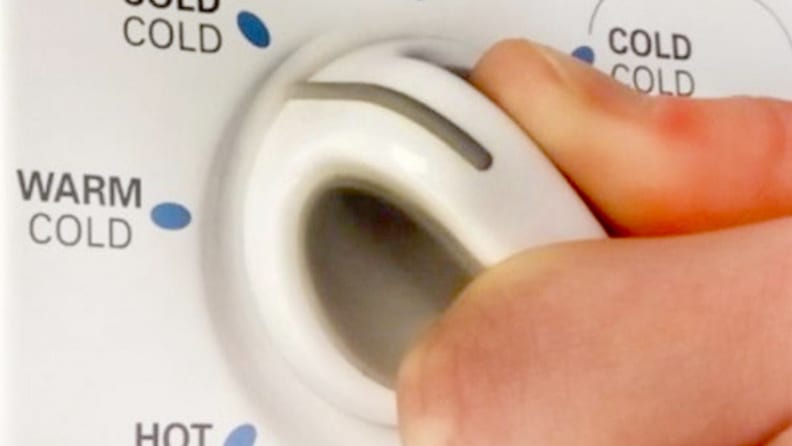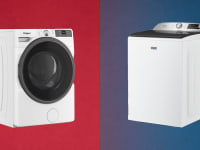12 eco-friendly ways to save money on your laundry
These laundry habits will help your wallet and the environment
Products are chosen independently by our editors. Purchases made through our links may earn us a commission.
"I’m looking forward to laundry day," said no one ever. It’s a chore that’s a bore, expensive, and time-consuming. Still, doing laundry regularly is a part of modern life. According to Energy Star, American families wash about 300 loads of laundry a year.
Luckily, there are numerous eco-friendly ways to get your laundry clean and dry. None of them are hard to do, and they can save you time, effort, and money. In honor of Earth Day coming up on April 22, here are some ideas to get you started:
1. Wear your clothes more often
Not every item needs to be washed after every wearing. Socks, underwear and baby clothes, yes. Jeans, definitely not. Experts say you should wash them no more than every four or five wearings, and some people wash them less frequently. You’ll get a lot more wear out of jeans if you wash them correctly. But if you're not fussy, you can hold off until they start to smell or get stretched out.
2. Wash in a high-efficiency (HE) washer
If you’re replacing an older washing machine, look at HE models, such as the Samsung WF45K6500AV. HE washers cost less to operate because they reduce water and energy usage. According to Reviewed’s in-house expert, Senior Lab Manager Jon Chan, most HE machines use about 13 gallons of water per load. Top loaders on a Normal cycle use about 20 gallons. Traditional washers can use much more—up to 40 gallons.
3. Use less detergent
For cleaner laundry, you should use less detergent. There is no magic “right amount” of detergent for all wash loads. Procter & Gamble says the amount of detergent you use should be based on the size of the load, the dirtiness of the clothes, and the hardness of your water. Increasing any of those will require more detergent. P & G’s advice? For medium loads, fill the cap on liquid detergent only to the first bar on the cap. For powder, which about half of Americans use, fill the scoop to bar 1 for a medium load. In our labs, we’ve seen that using too much detergent can leave greasy white spots on your clothes.
4. Wash in cold water

Between 70 and 90% of the energy used doing laundry comes from heating the water. Most modern detergents work fine in cold water. Besides, clothes are less likely to fade or shrink in cold water. You may want to use cold water washes all the time—but always look at the label to make sure you're washing at the right temperature.
5. Run full loads

A good tip is to consolidate small loads of laundry where you can. Instead of running lots of micro-loads, you’ll use less water and energy if you wait to run a fuller load of laundry. You should still sort whites from colors, and wash them in different loads.
6. But don't overload the machine
An overfilled washer will leave your laundry less clean, and a packed dryer will take longer to finish drying your clothes. Be efficient, but leave some room in the tub. If you can't fit your hand in among the clothes, take some out.
7. Select shorter cycles
For lightly soiled laundry, use a quick cycle. Often, in 20 minutes or less, your laundry will be clean. If your dryer has an Eco setting, use it. Quick wash uses a shorter spin cycle and uses cooler water temperatures compared to a regular wash. To get the best results, only fill your machine up to 40% full.
8. Choose bleach products carefully

In our tests, we discovered that the more environmentally-friendly oxygen bleach worked better than liquid chlorine bleach. It doesn't rely on the same corrosive, toxic chemicals that chlorine bleach does (sodium percarbonate vs. sodium hypochlorite), but brightens and disinfects just as well.
9. Do more hand laundry
Depending on the fabric, you might do better to wash it by hand. Lingerie cleans up nicely in a salad spinner. Cashmere, rayon, and silk can be washed in a sink or basin. If you don't have an in-unit washing machine, hand washing uses less water and is more economical than washing your clothes at a laundromat.
10. Hang up clothes to dry
Avoid the dryer when you can. Dryers put lots of wear and tear on your laundry, so don’t tumble the clothes every time. Delicates dry quickly when you hang them up. You don’t need a clothesline for this, but if your community allows it, and you have room for one in your yard, go for it. If not, get a drying rack and use it indoors.
11. Clean the dryer’s lint filter
Your dryer needs a good flow of air to dry clothes more quickly and efficiently. If you let the filter get clogged, the dryer will have to work harder, increasing drying time and raising your energy bill. And lint is flammable, so clear the filter after every load to prevent a dryer fire.
12. Iron less frequently

An iron consumes as much power as ten 100-watt lightbulbs. You can cut back on ironing your clothes if you hang them up as soon as you take them out of the washer. There are lots of ways to unwrinkle your clothes without ironing. Hanging wrinkled clothes in the bathroom while you shower is a time-tested trick. A quick pass with a hair dryer while you’re styling your tresses can also remove wrinkles from your outfit.
All of these suggestions, taken together, can leave your laundry sparkling clean while cutting water use and energy consumption. And if you’re wondering how much energy you’re actually consuming in your home, you can get an estimate based on your usage. That may be motivation enough to cut back.


